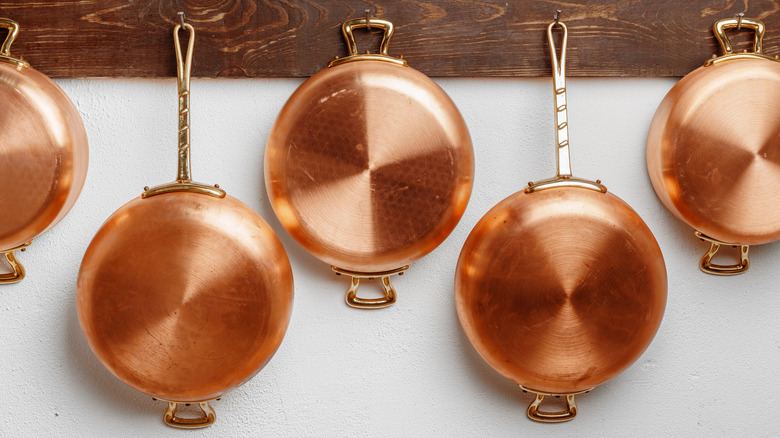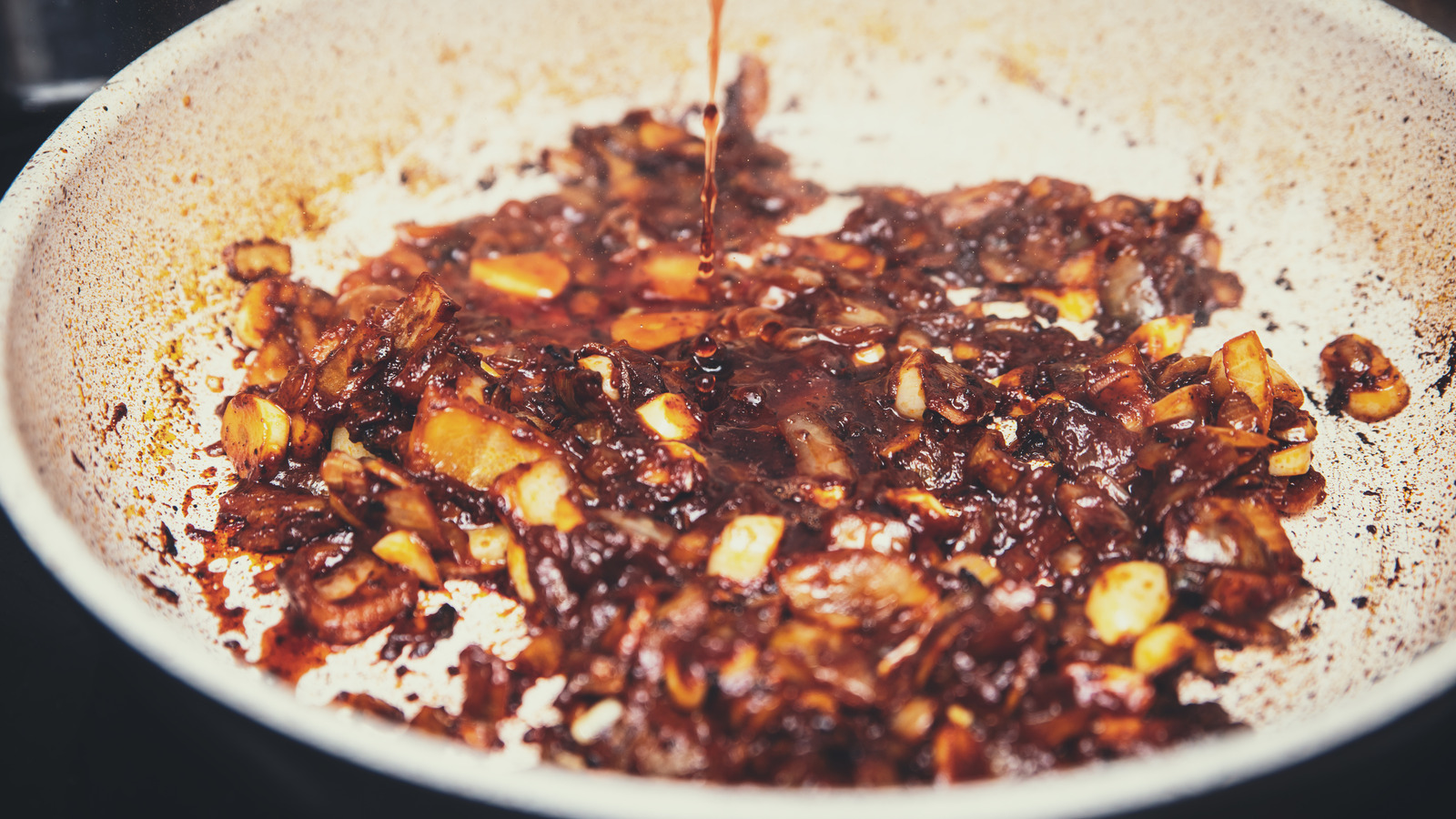After searing and sauteing, it’s common to notice beautifully browned bits clinging to the pan. Deglazing can loosen these residues and act as the first step to creating a complex and flavorful single-skillet sauce. For as foolproof of a process as it might seem, there is a possibility for things to go awry, especially if you work with the wrong tools. As a result, you might want to think twice before reaching for just any skillet or pan.
Materials like copper, aluminum, and even cast iron are all considered to be reactive. This means that pans crafted with these metals will undergo a sort of chemical reaction that causes the cookware to discolor when they come into contact with ingredients that are heavily acidic. Additionally, acids can even cause these metals to leach into food, imparting a metallic flavor. In fact, trace elements can also be left behind that may have harmful effects on health, depending on the metal. But, how does this all affect the deglazing process?
Since deglazing usually requires an acidic ingredient to loosen the fond, reactive pans prove to be a poor choice. Whether it be a squeeze of lemon juice or a drizzle of vinegar, acidity will trigger the release of metal atoms in these types of skillets, no matter what. So, in order to avoid destroying the cookware and jeopardizing flavor, a more suitable (and safer) option needs to be considered for deglazing.
Only one pan should be used for the job

When it comes to deglazing, always opt for a non-reactive pan. Despite the fact that some swear by using well-seasoned cast iron, only non-reactive options can truly withstand acidity. That said, of the many materials within this category of cookware, steer clear of glass or ceramic, as they can be fragile. Likewise, non-stick skillets should also be avoided. After all, the goal is to loosen residue that’s really stuck onto a pan, and a non-stick coating tends to prevent fond from ever fully forming.
Ultimately, the best choice is a stainless steel pan. This material encourages ingredients to stick during cooking, which is essential in developing the fond. Plus, it’s effective at evenly conducting heat, which can help leftover bits brown and caramelize without burning. Most importantly, however, its non-reactive quality allows the pan to withstand the pH of anything from a squeeze of citrus to a splash of cider and beyond. Not to mention that stainless steel is also an incredibly durable option that can be used to execute all sorts of cooking processes outside of deglazing.
At the end of the day, different pans and skillets serve different purposes. While reactive pans are great for tasks like quickly bringing water to a boil or searing a chicken breast to golden perfection, deglazing should be limited to non-reactive (ideally, stainless steel) pans. Don’t say that we didn’t warn you!







